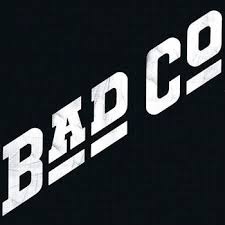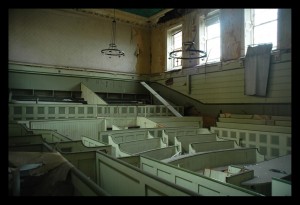Albums of the Kesh.
Bad Co./Bad Company-1974
In a year that brought us such melodic masterpieces like Wear It’s At by The Rubettes and the master-ful eponymous Quatro, 1974 can be remembered as one of the halcyon times for outstanding albums. Think Court and Spark/Joni Mitchell—461 Ocean Boulevard/Eric Clapton—Diamond Dogs/Bowie—Planet Waves/Dylan—On The Beach/Neil Young—or perhaps one of the greatest live albums of all time-It’s Too Late To Stop Now by Van Morrison. We layabouts in Compound 11 were certainly spoiled for choice and rather cash strapped laying out all those £2:20’s. In between all the boot bulling-drilling-lectures-cleaning-route marching-exercising and protesting sometimes we were lucky enough to book an hour on the Dansette in the study hut to spin out personal favourites. It has been well documented before that many albums were synonymous with Long Kesh…and by this time those that were most favoured would have been Tubular Bells—Dark Side of the Moon—Band on the Run and for the older generation known as the Sad Sacks—Porter Wagoner’s Greatest Hit or the Worst of Charlie Pride. Albums like these, when being played always drew moans of despair from the younger prisoners and remarks about receiving free packets of blades with every album bought.
 Bad Company was of course a manufactured band. Singer Paul Rodgers and drummer Simon Kirke from the wonderful Free plus Boz Burrell from King Crimson and Mick Ralphs late of Mott the Hoople. If the new amalgamation wasn’t being lauded as a new Supergroup-a la-Cream or to a certain extent CSNY– much was expected of them —-and they didn’t disappoint. Rodgers’s voice was a powerful fulcrum for the band. He epitomised rock and roll with his raunchy much imitated voice andwith the band signed to Swan Song records—Led Zeppelin’s label-they had truly arrived with a bang. The album-Bad Co.-was released early in 1974 with the first single coming right away. Can’t Get Enough of your Love remains the bands highest charting single. Although the song was credited to Mick Ralphs it could have been lifted straight from a Free back catalogue and rivalled Alright Now for intensity and rockability—testimony to Rodgers wondrous voice. Indeed, such esteem was he held in, that in between the breakup of Free and the formation of bad Company Rodgers was the number one choice to replace Jim Morrison as lead singer of the Doors after that talismans untimely death in July 1971.
Bad Company was of course a manufactured band. Singer Paul Rodgers and drummer Simon Kirke from the wonderful Free plus Boz Burrell from King Crimson and Mick Ralphs late of Mott the Hoople. If the new amalgamation wasn’t being lauded as a new Supergroup-a la-Cream or to a certain extent CSNY– much was expected of them —-and they didn’t disappoint. Rodgers’s voice was a powerful fulcrum for the band. He epitomised rock and roll with his raunchy much imitated voice andwith the band signed to Swan Song records—Led Zeppelin’s label-they had truly arrived with a bang. The album-Bad Co.-was released early in 1974 with the first single coming right away. Can’t Get Enough of your Love remains the bands highest charting single. Although the song was credited to Mick Ralphs it could have been lifted straight from a Free back catalogue and rivalled Alright Now for intensity and rockability—testimony to Rodgers wondrous voice. Indeed, such esteem was he held in, that in between the breakup of Free and the formation of bad Company Rodgers was the number one choice to replace Jim Morrison as lead singer of the Doors after that talismans untimely death in July 1971.
Bad Company – Can’t Get Enough – YouTube
Bad Co. Was much played in Eleven that summer and for many of us was a great antidote to the saccharin sweet drivel that plagued the charts. By the following year the same line up would regale us with another masterpiece-Straight Shooter complete with my personal favourite Paul Rogers lyric—“Johnny was a schoolboy when he heard his first Beatle song—Love Me Do I think it was……… “. In 1976 they released their third album—Running With the Pack. This album was a particular favourite for one of my closest friends—in Cage 21—who used it for the next 12 years as a writing pad when composing letters home. The myriad of inscriptions on it over all of those years would have given a cryptographer a few nights overtime in Bletchley Park, attempting to decipher the modern day hieroglyphics. Both were great albums with some exceptional tracks but the immediacy of Bad Co. ensured that this was the album we—of a certain age and disposition—would remember them by. We watched in wonder when we seen them on television performing on of their classic tracks..we dreamed of the day when we could wear those tight fighting loons, and platform shoes—rather than the quasi paramilitary garb we were now used to—to be allowed to grow our hair to almost unmanageable lengths rather than the short back and sides that was now regulation fare. The music alone was what made us semi-rebels—and that was as good as it got.
Beano





















